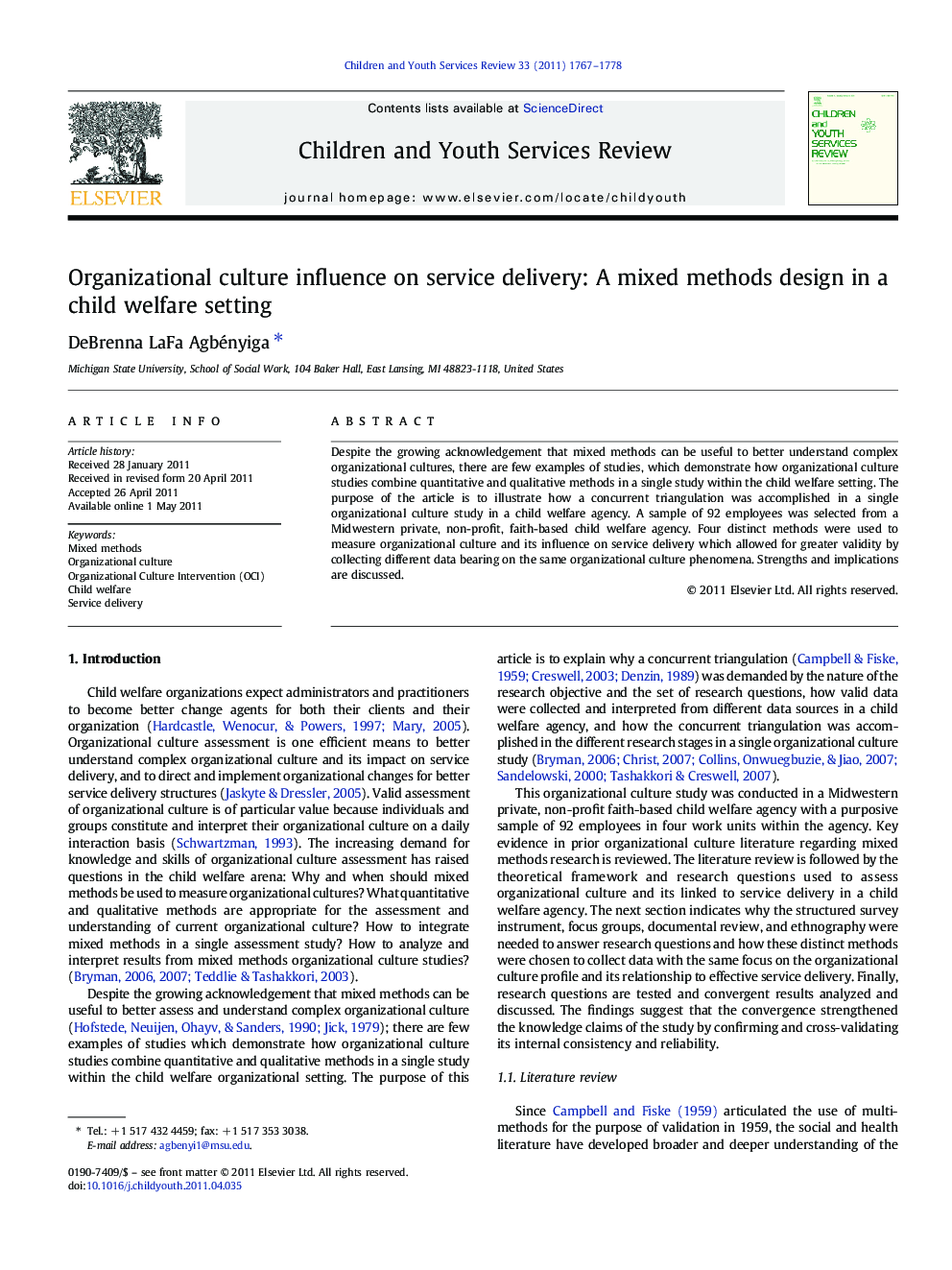| Article ID | Journal | Published Year | Pages | File Type |
|---|---|---|---|---|
| 347201 | Children and Youth Services Review | 2011 | 12 Pages |
Despite the growing acknowledgement that mixed methods can be useful to better understand complex organizational cultures, there are few examples of studies, which demonstrate how organizational culture studies combine quantitative and qualitative methods in a single study within the child welfare setting. The purpose of the article is to illustrate how a concurrent triangulation was accomplished in a single organizational culture study in a child welfare agency. A sample of 92 employees was selected from a Midwestern private, non-profit, faith-based child welfare agency. Four distinct methods were used to measure organizational culture and its influence on service delivery which allowed for greater validity by collecting different data bearing on the same organizational culture phenomena. Strengths and implications are discussed.
Research highlights► Convergence of data provides a clear illustration of the cultural behavior norms. ► It supported the various cultural styles found. ► Provided explanation and clarification where differences occurred in the findings. ► Convergence brought validity to the life of the organization's identified culture.
